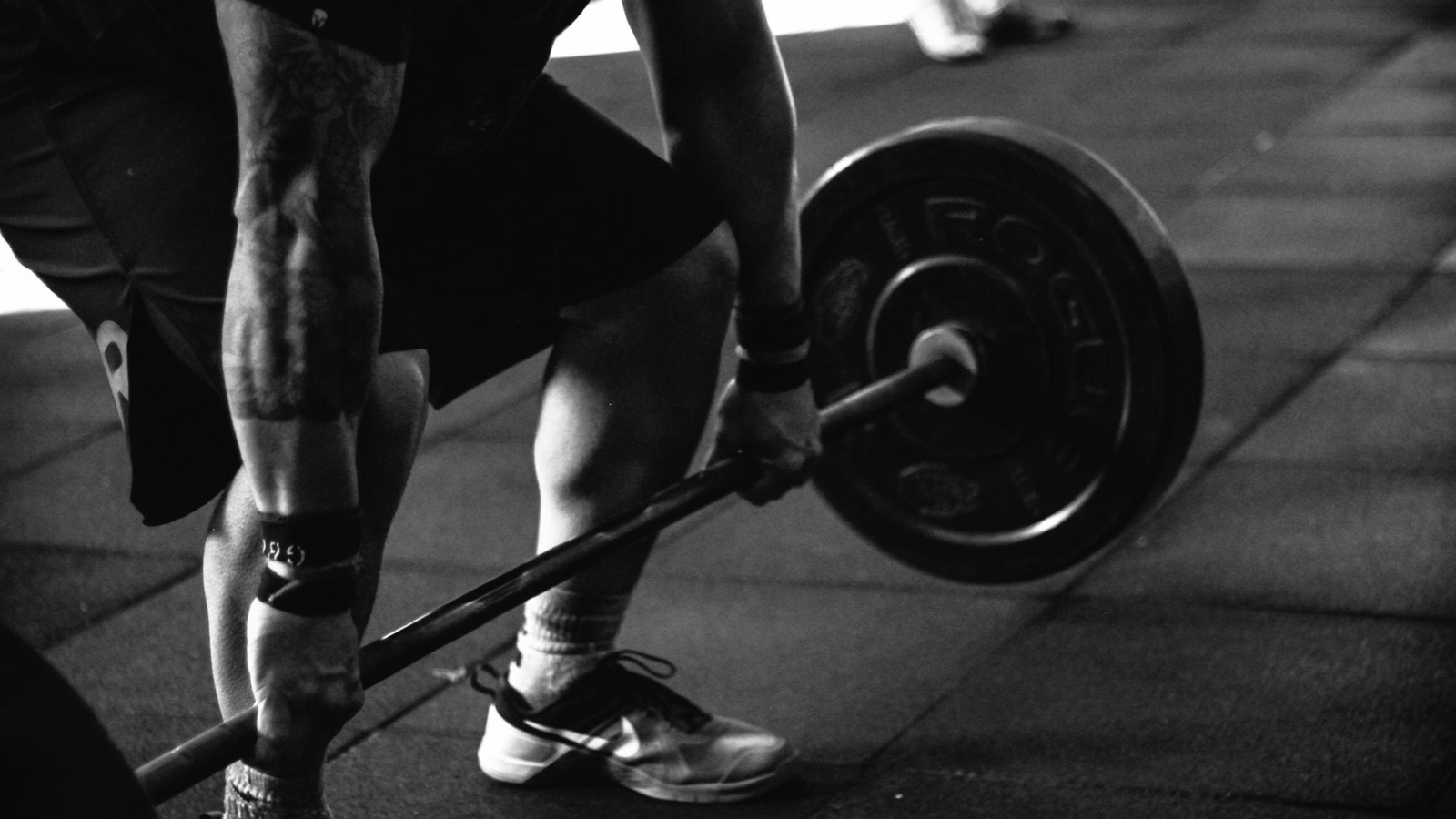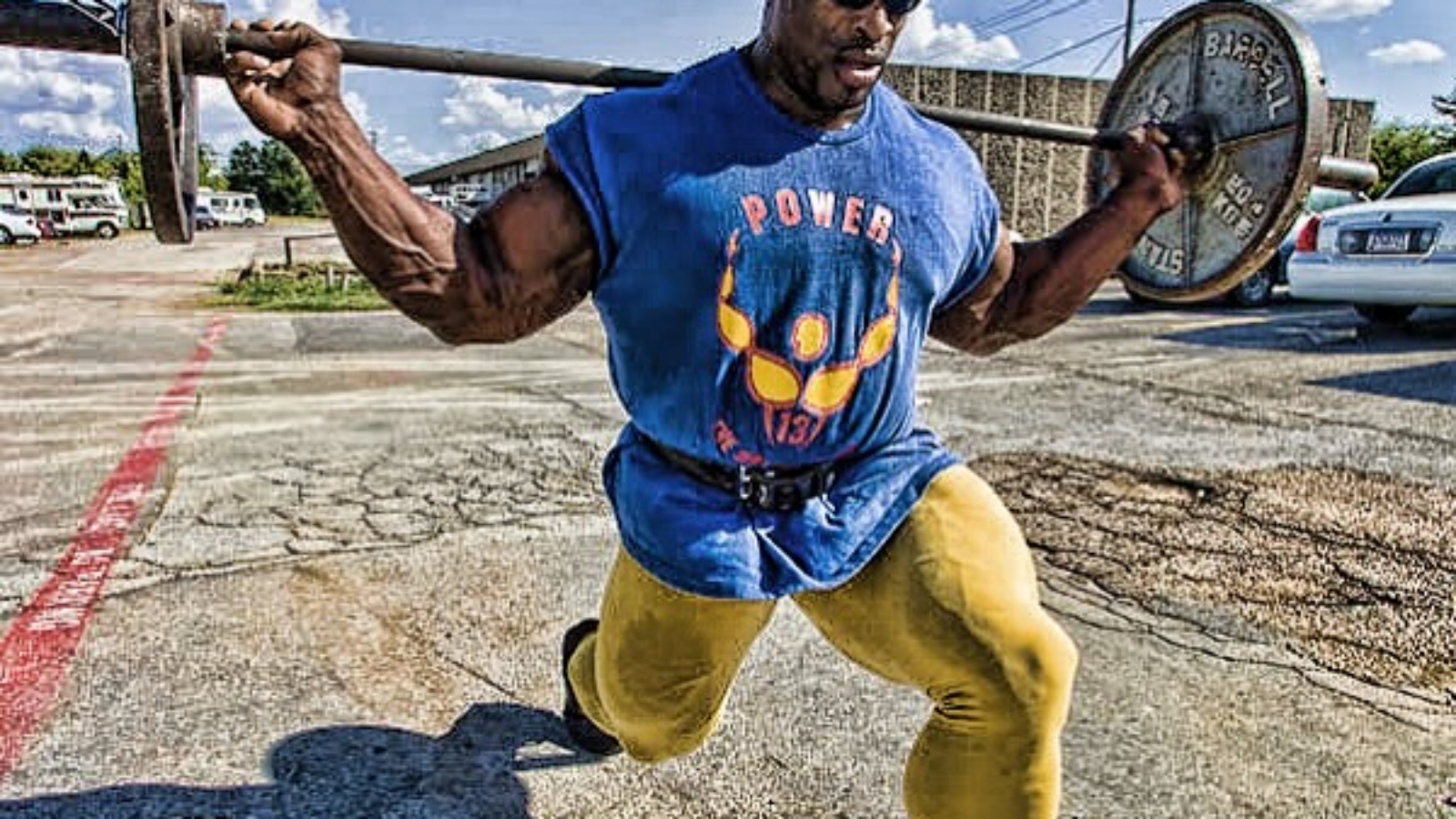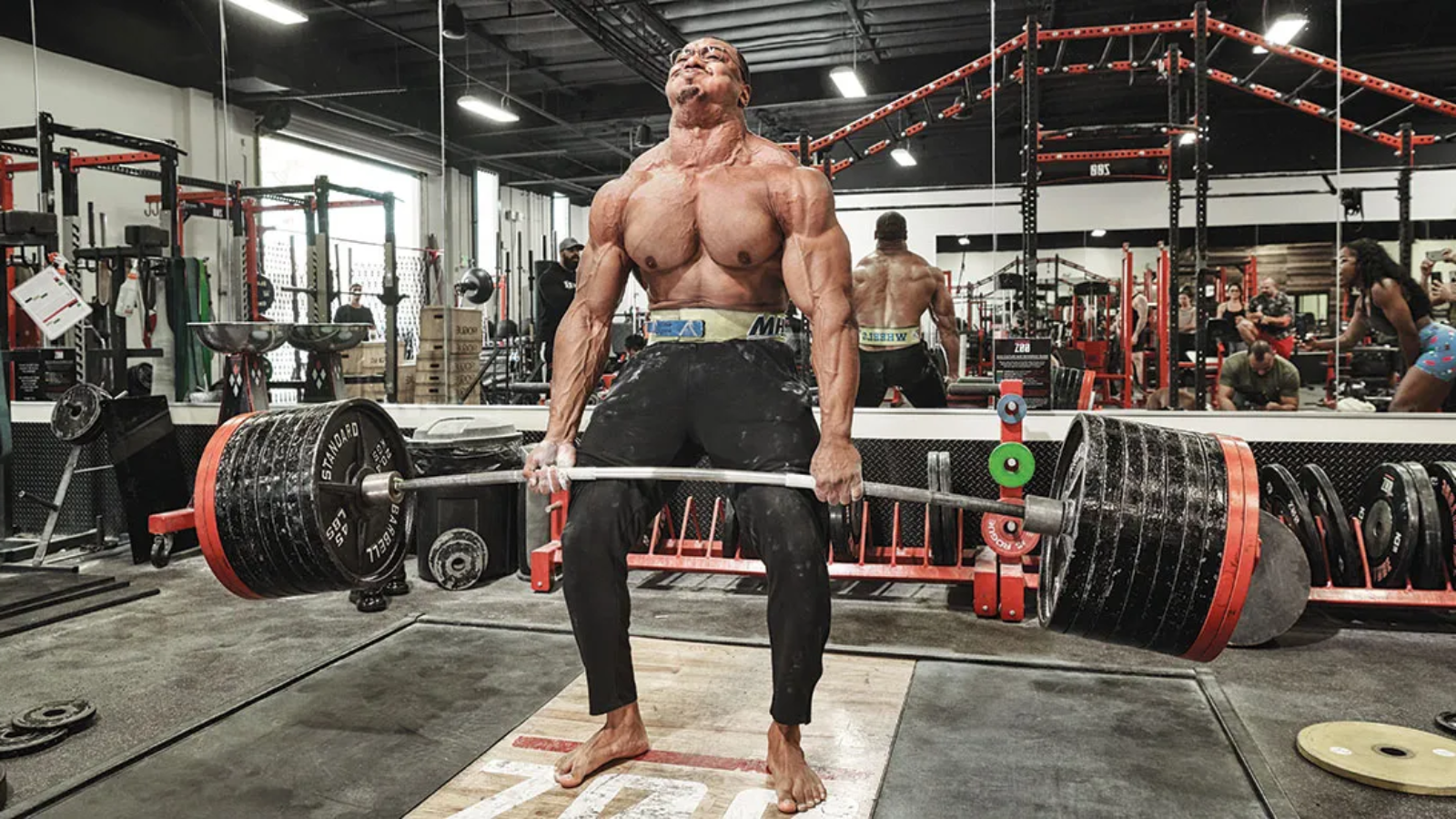In the world of strength training, few exercises stir as much debate—and confusion—as the trap bar deadlift. Often caught in the middle of arguments like trap bar deadlift vs conventional or lumped in with the hex bar deadlift as just a variation, the truth is this: trap bar deadlifts deserve to be in your program. Period.
With benefits ranging from improved power output to reduced injury risk, and an ability to serve as a bridge between sumo vs conventional deadlift stances, this lift isn’t just a “safer” version of a traditional pull—it’s a full-on performance enhancer. And according to thought leaders like Greg Nuckols, it might even be better for athletes in certain contexts.
So what makes the trap bar deadlift worth your attention? Let’s break it down.
What is a Trap Bar Deadlift?
Before we get into the trap bar deadlift benefits, let’s define it. The trap bar deadlift—also known as the hex bar deadlift—uses a hexagonal or diamond-shaped barbell that you step inside of. This positioning allows you to grip the bar with your arms at your sides, rather than in front of your legs as in a conventional deadlift.
This setup does several things:
- Aligns the load more directly with your center of gravity
- Decreases shear stress on the spine
- Encourages a more upright torso position
- Shifts the movement pattern to be more of a hybrid between a squat and a deadlift
And that’s where the magic begins.
Muscles Worked: What Does the Trap Bar Deadlift Work?
Wondering what does trap bar deadlift work? It’s a compound powerhouse.
Here are the major trap bar deadlift muscles worked:
- Glutes – The primary driver of hip extension
- Quads – More engaged than in a conventional deadlift due to the upright torso
- Hamstrings – Still involved but slightly less emphasized
- Erector spinae – Essential for spinal stability
- Traps and lats – For holding the load and posture
- Forearms – Heavily taxed due to the neutral grip
In short, the trap bar deadlift hits nearly every major muscle group involved in posterior chain development, with a special nod to the quads—making it closer to a hybrid between a squat and a hinge.
Trap Bar Deadlift Benefits: Why You Should Be Using It
So why should this lift be a staple in your routine? Let’s cover the benefits of trap bar deadlift from multiple angles:
1. Joint-Friendly Mechanics
The trap bar’s unique design reduces stress on the lumbar spine. If you’ve struggled with back issues or form breakdowns in the conventional deadlift, switching to a trap bar deadlift could extend your lifting career. It’s easier to maintain a neutral spine, especially for taller lifters or those with poor ankle mobility.
2. Athlete Performance Transfer
According to research and respected coaches like Greg Nuckols, trap bar deadlifts may transfer better to vertical jump performance than conventional deadlifts. That’s because they allow for higher peak power outputs, making them ideal for athletes who need explosiveness more than max strength.
3. Great for Beginners and Pros
The trap bar is user-friendly. Beginners pick up the movement pattern quickly, while advanced lifters can load it heavy without the high technical demands of the conventional deadlift. This versatility makes it one of the most scalable lifts in the gym.
4. More Weight, Safely
Lifters often pull more weight on a trap bar than with a straight bar. While this doesn’t mean you’re stronger per se, it does mean you can create more overload for hypertrophy—safely.
5. Neutral Grip
The handles allow a more natural wrist and shoulder position. It’s easier on the joints and allows for better recruitment of grip muscles, making it a useful complement to your total strength work.
Trap Bar Deadlift vs Conventional Deadlift
When we compare trap bar deadlift vs conventional, it’s important to understand that neither is superior universally—it depends on your goals.
| Criteria | Trap Bar Deadlift | Conventional Deadlift |
|---|---|---|
| Spinal Load | Lower | Higher |
| Quad Emphasis | Higher | Lower |
| Hamstring Focus | Moderate | High |
| Setup Difficulty | Easy | Advanced |
| Peak Power | Higher | Lower |
| Carryover to Sports | Better (for jumps/sprints) | Better (for pure hinge strength) |
In programs aiming for hypertrophy, explosive strength, or athletic development, the trap bar deadlift may even outperform the classic barbell deadlift. But if you’re chasing a powerlifting total or working on pure hinge strength, conventional deadlifts still reign.
The Sumo vs Conventional Debate—and Where the Trap Bar Fits
Let’s bring sumo vs conventional deadlift into the mix. The sumo stance offers a wider setup and a more vertical torso, similar to the trap bar. In fact, the trap bar pull almost mimics a narrow-stance sumo pull with dumbbells in each hand.
So if you’re someone who feels more comfortable pulling sumo, or you struggle with conventional deadlifts due to leverages or mobility, the trap bar might be your biomechanical sweet spot.
Plus, trap bar deadlifts offer a unique training tool to bridge the gap between the styles. They can be used in rotation with sumo and conventional deadlift work to add variety and address weak points.
Foot Placement on Leg Press—and Why It Matters for Deadlifts
You might be wondering: What does foot placement on leg press have to do with trap bar deadlifts?
Actually, quite a bit.
When you perform trap bar deadlifts, your stance and foot positioning determine whether you emphasize more quad or glute. Similar to how foot placement on the leg press can shift the stimulus up or down the leg, your trap bar stance can tweak the movement’s training effect.
- Feet wider + toes slightly out = More glute
- Feet narrow + upright torso = More quad
By thinking like a bodybuilder and tweaking stance and torso angle, you can tailor your trap bar deadlift to your goals—whether that’s glute hypertrophy or quad-focused power.
Reverse Nordic Curl: The Secret Sauce to Pair With Trap Bar Deadlifts
If you’re trying to develop bulletproof knees, strong quads, and a resilient posterior chain, don’t sleep on pairing reverse nordic curls with trap bar work.
The reverse nordic curl is one of the few exercises that eccentrically loads the rectus femoris—a quad muscle that’s often neglected in typical squat and deadlift patterns. Combined with the trap bar deadlift’s hybrid hinge-squat pattern, it creates a 1–2 punch for leg development and knee health.
Try this combo:
- Trap bar deadlifts: 4 sets of 5 reps (heavy)
- Reverse Nordic curls: 3 sets of 6–8 (slow eccentric)
The result? Quads of steel and knees that don’t cry during every squat session.Effective Reps and Maximizing the Trap Bar Deadlift
In recent years, the concept of effective reps has taken over evidence-based strength programming. The idea, popularized by researchers and coaches like Chris Beardsley, posits that only the last few challenging reps in a set—the ones near failure—provide the bulk of the muscle-building stimulus.
So how do trap bar deadlifts fit into the effective reps framework?
They’re ideal for it.
Because the trap bar deadlift allows for safer, more joint-friendly loading, lifters can take sets closer to technical failure without risking breakdown in form. That means you can chase effective reps more efficiently. You don’t have to stop a set early due to lower back fatigue or grip failure the way you might with a conventional deadlift.
Here’s a sample hypertrophy-focused set:
- 3–4 sets of 8–10 reps with RIR (Reps in Reserve) of 1–2
- Rest 2–3 minutes between sets
- Optional final set with drop weight for metabolic stress
This simple format lets you tap into both mechanical tension and metabolic stress—two key drivers of muscle growth—while minimizing injury risk.
Programming Trap Bar Deadlifts: Strength, Hypertrophy, or Power?
No matter your goal—whether it’s brute strength, more muscle, or explosive athleticism—there’s a place for trap bar deadlifts in your program. But the way you program them matters.
For Strength:
- Use lower reps (3–6), higher intensity (80–90% 1RM)
- Longer rest (3–5 minutes)
- Often paired with back squats, front squats, or conventional deadlifts on alternate days
For Hypertrophy:
- Moderate reps (8–12), moderate load (65–75% 1RM)
- Shorter rest (1–2 minutes)
- Superset with hamstring or quad accessory work (e.g., RDLs or walking lunges)
For Power:
- Low reps (3–5), lighter load (60–70% 1RM)
- Emphasis on bar speed and explosive intent
- Perfect for athletes, especially when paired with plyometrics like box jumps
Many collegiate strength coaches have replaced barbell cleans with trap bar jump deadlifts to train peak power with less technical demand. The trap bar shines in this role thanks to its neutral grip and centered load.
Advanced Tip: Use Handles and Range of Motion to Modify Difficulty
The trap bar deadlift is more versatile than people think.
Most trap bars come with high and low handles. Pulling from the high handles reduces the range of motion and makes the lift more quad-dominant—great for beginners or in-season athletes trying to manage fatigue.
Switch to the low handles, and the movement becomes more hip-dominant with increased knee and hip flexion. You’ll get a longer range of motion, increased posterior chain involvement, and more grip work.
You can also modify:
- Tempo – Try 3-second eccentrics to build control
- Pauses – Add a pause just off the floor for motor patterning
- Chains/Bands – Great for accommodating resistance and speed work
All of these variations keep the trap bar deadlift fresh and highly adaptable over long-term programming.
When to Replace Conventional Deadlifts with Trap Bar Deadlifts
There’s a time and place for everything, including traditional deadlifts. But here are scenarios where you might swap conventional deadlifts for trap bar deadlifts entirely:
- Chronic Low Back Pain
If you constantly battle lumbar discomfort, the trap bar’s upright torso minimizes shear forces and might allow you to train without pain. - Tall Lifters
Lifters over 6 feet often struggle with hip positioning and spinal angles in conventional deadlifts. The trap bar helps maintain more vertical alignment and reduce awkward levers. - Athlete Off-Season Training
Trap bars are perfect for maintaining strength without frying the CNS. Less spinal load, more power, and faster recovery. - Hypertrophy Focused Blocks
Because it allows more quad involvement and volume, the trap bar is better suited for muscle-building than max-effort pulls.
Remember, the trap bar deadlift vs conventional debate isn’t about choosing one forever—it’s about choosing the right tool for the job. If you need hinge work and posterior chain focus, keep the straight bar. But if you’re chasing power, hypertrophy, or joint-friendly strength, trap bar wins.
The Greg Nuckols Take: Evidence Meets Practicality
Few names in the strength world carry more weight than Greg Nuckols. Known for his science-backed approach, Nuckols has often praised the trap bar deadlift for its real-world applicability.
In his writing, he notes that the trap bar allows for:
- Higher force and power output
- More quad activation
- Lower risk for form breakdown
He even suggests that for general strength, performance, and hypertrophy goals, the trap bar might be superior to straight bar deadlifting in certain populations.
It’s a powerful endorsement that aligns with modern programming trends—move beyond just barbell bias and toward better outcomes.
Common Mistakes with the Trap Bar Deadlift
Despite its user-friendly design, the trap bar deadlift is still butchered in gyms every day. Here are the top mistakes:
1. Squatting Instead of Deadlifting
Yes, the trap bar allows for more knee bend—but that doesn’t mean turn it into a squat. Sit the hips back and hinge, don’t turn the movement into a leg press.
2. Yanking the Bar
Ripping the bar off the floor leads to rounded backs and jerky reps. Build tension before lift-off, just like in any other deadlift.
3. Bar Drift
Though you’re inside the bar, lifters still tend to let the bar move forward mid-lift. Keep it tight to your midline to maintain control and engagement.
4. High Handles for Everything
Yes, high handles are easier. But if you want the real trap bar deadlift benefits, incorporate low handle pulls for better hip and back development.
Accessory Movements to Pair with Trap Bar Deadlifts
Build a powerful posterior chain and injury-proof your lifting by pairing trap bar work with these:
- Reverse Nordic Curls: For quad and knee bulletproofing
- Hip Thrusts: For targeted glute hypertrophy
- Barbell Rows: For balance and upper back thickness
- Leg Press (with varied foot placement): For quad or glute emphasis
- RDLs: To bring up the hamstrings that trap bar de-emphasizes
Each complements the trap bar deadlift muscles worked, ensuring you’re not leaving gains on the table.
The Final Verdict: Why the Trap Bar Deadlift Should Be in Every Lifter’s Program
The trap bar deadlift is not just a “beginner lift” or a compromise for people with back pain. It’s a fully-fledged tool that belongs in the arsenal of serious lifters, athletes, and bodybuilders alike. When used intelligently and with purpose, it can help you:
- Build serious strength
- Increase muscle mass (especially in the quads and glutes)
- Enhance power output for sports
- Reduce injury risk
- Train more frequently with less spinal stress
So whether you’re rotating through trap bar deadlifts, sumo deadlifts, and conventional pulls, or you’re using it as a primary lower body lift, it deserves a permanent place in your programming.
Real-World Application: How to Structure a Training Week with the Trap Bar Deadlift
Here’s an example of how to integrate the trap bar deadlift into a weekly strength program:
4-Day Strength & Hypertrophy Split
Day 1: Lower Body (Heavy)
- Trap Bar Deadlift – 4×5 @ 80%
- Bulgarian Split Squat – 3×8
- Reverse Nordic Curl – 3×6
- Weighted Plank – 3×30 seconds
Day 2: Upper Body Push
- Bench Press – 4×6
- Dumbbell Shoulder Press – 3×10
- Triceps Dips – 3×12
- Lateral Raises – 2×15
Day 3: Lower Body (Volume)
- Trap Bar Deadlift (Low Handles, Tempo) – 4×8
- Leg Press (Foot Placement: High & Wide) – 3×12
- RDLs – 3×10
- Hanging Leg Raises – 3×15
Day 4: Upper Body Pull
- Pull-Ups – 4×8
- Barbell Row – 4×10
- Face Pulls – 3×15
- Barbell Curls – 3×12
This split gives you both strength and hypertrophy stimulus while using the trap bar in two different ways: heavy top-end loading early in the week, and metabolic stress-focused volume later on.
The Trap Bar’s Role in Periodization
Smart lifters know that progress over time comes from cycling intensity, volume, and movement selection. The trap bar deadlift shines here as well.
Accumulation Phase (Muscle Growth)
- High volume, moderate intensity (8–12 reps)
- Use low handles for greater ROM
- Pair with lunges, leg press, or Nordic curls
Intensification Phase (Strength Focus)
- Lower reps, higher loads (3–5 reps)
- High handle to allow heavier loads with less spinal fatigue
- Pair with back squats or RDLs
Peaking/Power Phase
- Very low reps, submaximal load (1–3 reps at 60–75%)
- Focus on bar speed (velocity-based training)
- Ideal for athletes preparing for competition or return to play
Even in deload or recovery blocks, the trap bar’s neutral grip and reduced spinal load make it a go-to option for maintaining output without overreaching.
Bonus Section: Trap Bar for Specific Populations
Let’s zoom in on a few groups that especially benefit from trap bar deadlifts:
1. Aging Lifters
For older trainees, the trap bar is a fantastic tool. It allows continued heavy lifting without unnecessary stress on the joints or spine. The neutral grip is easier on the wrists and shoulders, and the movement mimics daily functional tasks like picking things up from the ground.
2. Athletes in Season
Heavy barbell training can be too taxing during competitive seasons. Trap bar pulls allow athletes to maintain lower body strength and explosiveness while reducing soreness and recovery demand.
3. Beginners Learning to Deadlift
Because of the natural grip and midfoot-aligned load, trap bar deadlifts are easier to teach and execute with clean form. They build confidence, patterning, and base strength before transitioning to more technical lifts.
Addressing the Critics: Is the Trap Bar “Cheating”?
Some purists in the powerlifting or strength community argue that the trap bar is “easier” or less legitimate than traditional barbell deadlifts. Let’s address that head-on.
Yes, most lifters can pull more weight on a trap bar than a straight bar. But that doesn’t mean the movement is cheating—it’s simply different. It’s biomechanically more efficient and trains a slightly different set of muscles, with more quad emphasis and less low-back risk.
Remember, not every lift needs to be “harder” to be effective. If your goal is getting stronger, more muscular, and more resilient, the benefits of trap bar deadlift training speak for themselves.
Combining Trap Bar Deadlifts with Other Pulling Movements
For maximum strength development, don’t rely solely on one type of deadlift. Instead, alternate through variations based on your cycle goals:
- Week 1–3: Trap Bar Deadlift (Strength Focus)
- Week 4–6: Sumo Deadlift (Posterior Chain & Hip Focus)
- Week 7–9: Conventional Deadlift (Hinge Dominant)
- Week 10–12: Trap Bar Deadlift (Power Focus – Jump or Speed Variations)
Rotating between trap bar deadlifts, sumo deadlifts, and conventional keeps your progress sustainable and prevents overuse.
Final Thoughts
So—what does trap bar deadlift work? It works almost everything.
It builds:
- Leg strength (quads + glutes)
- Back and grip strength
- Explosive power
- Injury resilience
- And perhaps most importantly, long-term lifting sustainability
From foot placement on leg press to reverse Nordic curl pairings, this lift integrates beautifully with a smart, well-rounded training program.
Whether you’re a Greg Nuckols-level data nerd or just someone who wants to get stronger without beating up your body, it’s time to put the trap bar front and center.
Your spine, knees, and gains will thank you.



